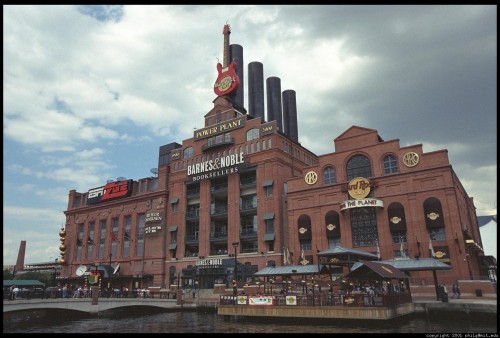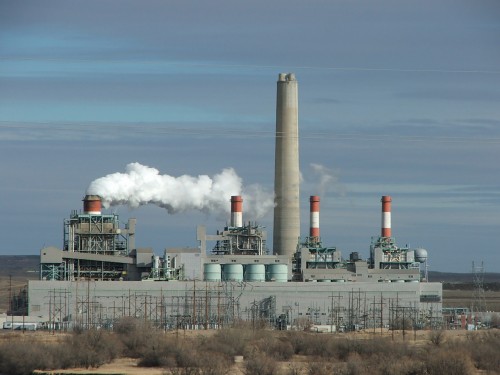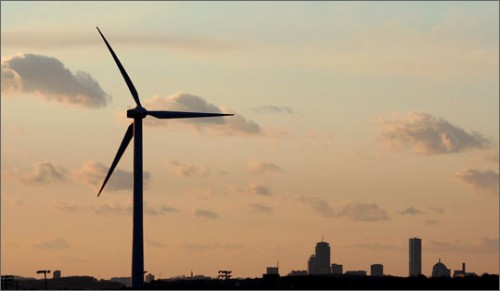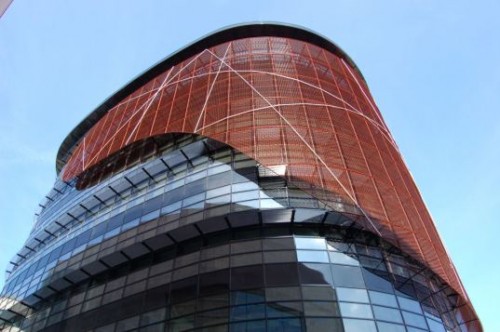Our round table discussion at the World Future Energy Summit was entitled, The Aesthetics of Power Generation Architecture in the Urban Fabric of the Renewable Energy Future. A summary follows below of the main topics discussed. Illustration sources can be found by clicking on the images.
Some other writings on the subject:
Jennifer Schwab
etsu.co.uk
UCSC
———————————————————–
As we move towards our renewable energy future we should recognize the inherent differences that exist between the old and the new means of energy production and the change to built manifestations that consequently follow from this shift. When power generation facilities were adapted for the urban environment in previous eras, they necessarily responded to the aesthetic considerations required to integrate with the fabric of the community.
For the greater part of the 20th century, power generation was hidden far away from our daily interaction. but as the days of the gas or coal fired power plant at the farthest outskirts of the city come to a close, we will find more and more integration of energy production within the fabric of our commercial and residential communities. The need for large scale exurban generation will always be there, but this will be augmented more and more by urban generation as well.
We live in a world that cross-culturally puts a high emphasis on design. As energy generation necessarily comes in closer proximity with the real estate that it powers, issues of aesthetics that drive acceptance are becoming more and more debated.
“The Keeper’s finding that Nantucket Sound is eligible for listing in the national register provides information that will help us to undertake final consultations and analysis of potential impacts of wind development on historic and cultural resources in Nantucket Sound.”-US Secretary of the interior ken SalazarJanuary 4, 2010
A holistic approach to a renewable energy infrastructure has a place for both macro and micro-generation. Macro installations should take care in their design to integrate with their natural surroundings and even go so far as to create a sculptural response to the visual experience akin to the manner in which land art uses nature as its canvas. Micro installations should take care in their design to integrate with the fabric of the urban community. Just as buildings and public art exist as interventions in the fabric of the city, so must micro-generation constructions from our suburbs to our downtowns react responsibly to their role as permanent additions to the city.
Large renewable energy installations in the oceans and the landscape will be essential to a zero carbon future. But they will need to be augmented perhaps as much as 25% by changes within the construction industry that bring power generation to buildings themselves and reduce energy use through design. The 21st century concept of zero-impact design has taken off rapidly and the first examples of such buildings have already been completed in the past few years. LEED, BREEAM, and ESTIDAMA ratings are looking to keep up with this ever-rising bar. Newer codes such as those of the international living building institute (ilbi.org) have been created to push building towards these higher standards that must also take into account the embodied energy in the materials and construction means.
We may see efforts within developments to establish medium size power generation facilities as a part of master planning. This will be especially true for greenfield development but will also be applicable to larger infill projects. Such facilities could be utilizing solar, wind, biogas CHP or other sustainable technologies. In all cases, they will have to look good. One concept is the Sustainable Neighborhood Auxiliary Power module. Such a product could be managed by a cooperative and the cost could be amortized over 30 years with the manufacturer/installer acting as a creditor and the payments for the energy acting as a plan towards clear and free ownership on the part of the coop. Here aesthetics is of utmost importance for these interventions to the fabric of daily lives.
At the largest scale just short of reliance on rural and offshore energy power plants, there are a number of projects that are exploring contained energy self-sufficiency on the level of cities, the most well-known of which, Masdar City. Others, such as Dongtan, China, are springing up around the world. And meanwhile many existing cities are aspiring to retrofit themselves to carbon neutrality, Copenhagen by 2025.
We have on the one hand an ever increasing drive toward buildings and cities that are being designed to run on 100% renewable energy. The design community and city planners are moving in this direction driven by the collective will of society. And on the other hand we have technologies proliferating that are still rather utilitarian in their form such as the standard horizontal axis, three blade wind turbine. And these utilitarian forms are seeing some pushback from individual communities, especially as they come closer and closer to the city. The first warning signs of this are seen in rural mountaintop residential communities and coastal communities but this debate will only get more and more heated as the devices integrate into more dense urban environments.
To proactively address this situation and to provide the impetus for new ideas in renewable energy aesthetics, we propose the Land Art Generator Initiative. Beauty is a subjective thing. It is driven by a complex relationship between art and popular culture and our opinions on aesthetics are deeply rooted in our psychology. What is needed in order to bridge the gap (between the larger desire for a renewable future and the community level negative reactions to the application of the systems required for it) is an artistic movement that can set a course towards aesthetic considerations in sustainable infrastructure. Because, after all, sustainability in communities is not only about resources, but it is also about harmony.



